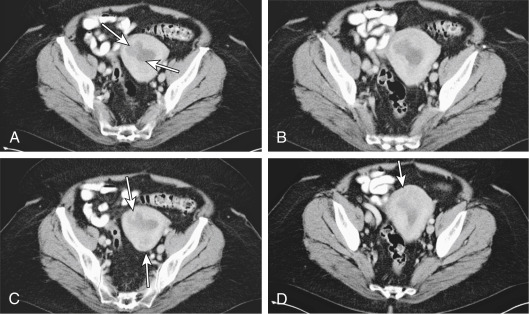AUTHORS: Christina Nestlerode, DO and Robert Neff, MD
Cancers of the uterus include tumors that originate from epithelial or mesenchymal tissue. Tumors that arise from the epithelium are referred to as adenocarcinomas, whereas tumors that arise from mesenchymal tissue (i.e., connective, muscular, vascular) are referred to as sarcomas. These tumors may be found in various locations of the uterus including the endometrium or myometrium.
Historically, endometrial adenocarcinomas were divided into two categories: Type 1 and Type 2. Type 1 endometrial carcinomas refer to endometrioid subtypes, whereas Type 2 endometrial carcinomas refer to serous, clear cell, and mixed Mullerian subtypes (see “Endometrial Cancer”). Recent molecular studies have shown carcinosarcomas (MMMT) to be closely related to epithelial tumors compared to sarcomas.
This chapter will focus on sarcomas of the uterus arising from the endometrial stroma or myometrium.
| ||||||||||||||||||||
Incidence of all uterine cancer is 28.1 per 100,000 women per yr with 4.9 deaths per 100,000 women as of 2018. In the most recent update from SEER Annual Report to the Nation, uterine cancer showed the highest increase frequency in death of all cancers among U.S. women. Endometrial cancer remains the most common uterine malignancy in the U.S; however, sarcomas of the uterus are rare. Sarcomas account for approximately 3% to 8% of all cancers of the uterine corpus. Sarcomas are associated with a poor prognosis compared to endometrial cancer.
- Abnormal vaginal bleeding is the most common symptom (90% of women with diagnosis)
- Vaginal discharge also may be a presenting symptom (10% of these patients have non-bloody discharge)
- May also present as pelvic pain or pressure and pelvic mass on examination (10% of women with uterine sarcoma)
- Urinary symptoms
- Abdominal pain or distention
- Weight loss
